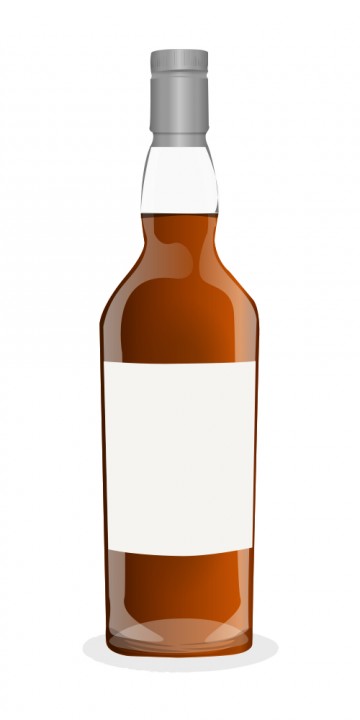Royal Canadian Small Batch is Canadian-produced whisky blended, bottled, and marketed by Sazerac Company in the USA. I am aware of no information identifying the individual Canadian distillery or distilleries at which the component whiskies were produced.The reviewed bottle has been open for two months and is 80% full. The body of the whisky is of medium thickness
This review will be made using three separate review formats and also using separate ratings by whisky category and against all whiskies. In future reviews I may use any one of these formats or multiple formats in my reviews, according to my inclination at the time. These are just three separate equally valid lenses through which to observe and review the whisky
Format #1, NTFB, Nose-Taste-Finish-Balance, the familiar 25-point-each Time-Space-Sequential Evaluation
Format #2, SQVH, Strength-Quality-Variety-Harmony, also 25-points each, Non-Time-Space- Sequential
Format #3, WGYA, Wood-Grain-Yeast/Add-ons Component Element Evaluation. Add-on flavours include peat, smoke, brine, and any outright additives, such as wine, maple syrup, caramel, etc. I will weight all whiskies except US non-wine-finished whiskies on a 30pt-30pt-40pt scale. Standard, non-wine-finished US whiskeys will use a 40pt-30pt-30pt scale, to reflect the much heavier emphasis on wood flavours in these styles of whiskey
NB These three formats should give similar, but not necessarily identical grading scores. The posted review score is the NTFB-all score
Format #1 Nose-Taste-Finish-Balance; Sequential
Nose: strong intensity, sweet fragrant maple with wine accents. There is certainly some spicy rye grain prominent in this blend. Alchol is present but understated. Very pleasant and enjoyable. Score 23 all whiskies; 24 category of Canadian whisky
Taste: the nose flavours translate well to the palate. Clean Canadian-style re-used wood flavours with wine; spiciness is much stronger on the palate than in the nose. The alcohol is a little bit too strong, but it gives a pleasant bite, which contrasts nicely with the sweetness
Score 21 all; 23 Canadian category
Finish: medium to long; this finishes on mostly fruty wine flavours with some spice. The finish is not quite as coherent as is the palate. Score 21-all; 22 Canadian category
Balance: the flavours are attractive and robust, but not especially refined, on palate and finish. this is a nice specimen of whisky in the Canadian blended whisky style. Score 22 all; 23 Canadian style
Total NTFB scores: 87 all whiskies; 92 Canadian category
Format #2 Strength-Quality-Variety-Harmony; Non-Sequential
Strength: the strength of all of the important elements is quite good, except for the wood flavours fading out earlier than the other components during the finish. Alcohol greeting on the palate is perhaps a hint stronger than would be desired, but it does not detract much from the overall effect. Score 23 all; 24 Canadian
Quality: excellent grain and wine flavours are manifest in Royal Canadian Small Batch. The wood flavours lean very slightly toward the bitter and are of not quite as high a quality as are the other flavours. Score 22 all; 23 Canadian
Variety: There is very adequate variety among the three major sets of flavours, giving a very good contrast. Score 22 all; 23 Canadian
Harmony: these flavours work well together, except for a slight edge of bitter stridency in the wood, especially on the finish. The alcohol bite is also just a little bit stronger than ideal also. Overall the effect remains quite good. Score 20 all; 22 Canadian
Total SQVH scores: 87 all whiskies; 92 Canadian category
Format #3 Wood-Grain-Yeast/Add-on; Component Element Evaluation
Wood: the sweet maple flavour in the nose is pleasant, but the wood goes a little bitter on the palate and even more so on the finish. Also, the wood flavours hold up least well among the various major flavours into and through the finish. This is re-used-wood flavour, typical and good by Canadian whisky standards, but lacking depth and range by contrast to new oak. Score 23/30 all; 25/30 Canadian
Grain: the rye grain is very very nice here. Other grains are in the background, but pleasantly so and without negative interaction. Alcohol from the fermented grain is just a little stronger than optimal on the palate and on the finish. Score 28/30 all; 29/30 Canadian
Yeast/Add-ons: the wine flavours are superior here, just as are the grain flavours. This is one of the best wine influences I have seen in Canadian whisky. If caramel is used for sweetener in Royal Canadian Small Batch whisky, it is done so so discreetly as to blend in excellently. Score 36/40 all; 38/40 Canadian
Total WGYA scores: 87 all whiskies; 92 Canadian category

Comment on @JasonHambrey's review